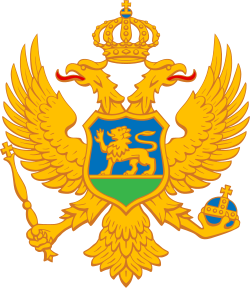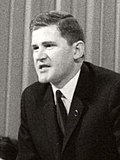President Term of office Party Notes No. Portrait Name(Birth–Death) Took office Left office Time in office President of the Montenegrin Anti-Fascist Assembly of National Liberation 1943–1946 N/A Niko Miljanić Никола Миљанић (1892–1957) 15 November 1943 21 November 1946 3 years, 6 days Independent (JNOF / NFJ ) Leader of Montenegrin wartime assembly. Presidents of the Presidium of the People's Assembly 1946–1953 1 Miloš Rašović Милош Рашовић (1903–1968) 21 November 1946 6 November 1950 3 years, 350 days Communist Party 2 Nikola Kovačević Никола Ковачевић (1890–1964) 6 November 1950 4 February 1953 2 years, 90 days Communist Party (renamed) Communist Party reformed and renamed into the League of Communists . League of Communists (renamed) Presidents of the People's Assembly 1953–1974 (2) Nikola Kovačević Никола Ковачевић (1890–1964) 4 February 1953 15 December 1953 314 days League of Communists 3 Blažo Jovanović Блажо Јовановић (1907–1976) 15 December 1953 12 July 1962 8 years, 209 days League of Communists 4 Filip Bajković Филип Бајковић (1910–1985) 12 July 1962 5 May 1963 297 days League of Communists 5 Andrija Mugoša Андрија Мугоша (1912–2006) 5 May 1963 5 May 1967 4 years League of Communists 6 Veljko Milatović Вељко Милатовић (1921–2004) 5 May 1967 6 October 1969 2 years, 154 days League of Communists 7 Vidoje Žarković Видоје Жарковић (1927–2000) 6 October 1969 1 April 1974 4 years, 177 days League of Communists N/A Budislav Šoškić Будислав Шошкић (1925–1979) 1 April 1974 5 April 1974 4 days League of Communists Acting President Presidents of the Presidency 1974–1990 (6) Veljko Milatović Вељко Милатовић (1921–2004) 5 April 1974 7 May 1982 8 years, 32 days League of Communists 8 Veselin Đuranović Веселин Ђурановић (1925–1997) 7 May 1982 7 May 1983 1 year League of Communists 9 Marko Orlandić Марко Орландић (1930–2019) 7 May 1983 7 May 1984 1 year League of Communists 10 Miodrag Vlahović Миодраг Влаховић (1924–2006) 7 May 1984 7 May 1985 1 year League of Communists 11 Branislav Šoškić Бранислав Шошкић (1922–2022) 7 May 1985 7 May 1986 1 year League of Communists 12 Radivoje Brajović Радивоје Брајовић (born 1935) 7 May 1986 7 May 1988 2 years League of Communists 13 Božina Ivanović Божина Ивановић (1931–2002) 7 May 1988 13 January 1989 [ b] 251 days League of Communists N/A Slobodan Simović Слободан Симовић (1939–1998) 13 January 1989 17 March 1989 63 days League of Communists Acting President 14 Branko Kostić Бранко Костић (1939–2020) 17 March 1989 23 December 1990 1 year, 281 days League of Communists President of the Republic 1990–1992 15 Momir Bulatović Момир Булатовић (1956–2019) 23 December 1990 28 April 1992 1 year, 127 days League of Communists (until 1991) League of Communists reformed and renamed into the Democratic Party of Socialists . Democratic Party of Socialists (from 1991) 































